A Conversation With Jon Shenk (THE ISLAND PRESIDENT)
[The Island President is now available on DVD and at Amazon Instant through First Run Features.]
News travels fast when human life is at stake. The more imminent the threat, the more likely it is to stir a reaction. It’s when the threat of mortality is not readily apparent that it fails to elicit a reaction. Which is one reason that the conversation surrounding climate change has fallen into the peripheries of the public’s attention.
With some luck, Jon Shenk’s The Island President will change that. The documentary sets down in the majestic island archipelago of the Maldives, located just a few hundred miles off the coast of India. The sea-bound nation comprises 1,200 islands, 200 of which are inhabited, all of which are under the threat of rising sea water levels. Shenk (The Lost Boys of Sudan) and his crew follow the Maldives’ first democratically elected president, Mohamed Nasheed, over his first year in office, gaining unprecedented access to the man as he prepares to present his nation’s situation at the 2009 Copenhagen climate change conference.
Framed as a “David vs. Goliath story”, The Island President foregrounds Nasheed’s ambitions with his rough-and-tumble history opposing the former regime of Maumoon Abdul Gayoom. Gayoom reigned over the Maldives for thirty years, carrying the air of a “mafia don”, as Nasheed recalls. His administration was marked by corruption, narrow escapes from assassination, and fierce suppression of his opponents—including Nasheed himself. After enduring months of solitary confinement, torture and imprisonment, Nasheed returned with a conviction to unseat Gayoom. Founding the Maldivian Democratic Party (MDP), he went on to usher in the nation’s first proper democracy.
On assuming presidency, he said, “It won’t be any good to have a democracy if we don’t have a country.” The Island President effortlessly shifts from the historical to the political, telling its story through a wide range of styles. The film starts as a glossy documentary complete with impressive aerial photography, lush tracking shots and well-composed interviews. As it moves toward the Copenhagen conference, however, it turns into a vérité documentary, squeezing us into back-room meetings with influential heads of state, stealing glimpses of the bureaucracy that hobbles even the most existential of threats. The Island President is too compelling a story to reduce to advocacy. Yet advocacy is central to its story, especially since news broke out this February of Nasheed’s forced resignation in the face of an alleged coup.
Hammer to Nail spoke to Jon Shenk on the day of The Island President‘s New York premiere. We discussed his inspirations for making the film—and any film—the relationship between entertainment and advocacy, climate change and more.
Hammer to Nail: I imagine that there were numerous aspects of this project that you found intriguing—Nasheed is a very charismatic subject, climate change is endlessly relevant, and the Maldives are of course a beautiful place to spend your time. What was your initial point of interest?
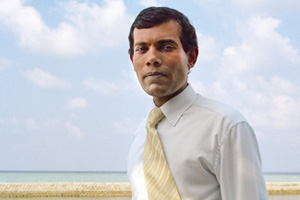 Jon Shenk: I read an article about [Mohamed] Nasheed when he was elected in 2008. He was the first democratically elected leader of the Maldives. And it was an incredible story because the Maldives was an 100% muslim nation that had been ruled by an autocratic dictator [Maumoon Abdul Gayoom] for 30 years. Sounds familiar now that we’ve been through the Arab Spring with Tunisia, Egypt and Libya.
Jon Shenk: I read an article about [Mohamed] Nasheed when he was elected in 2008. He was the first democratically elected leader of the Maldives. And it was an incredible story because the Maldives was an 100% muslim nation that had been ruled by an autocratic dictator [Maumoon Abdul Gayoom] for 30 years. Sounds familiar now that we’ve been through the Arab Spring with Tunisia, Egypt and Libya.
H2N: But this in fact preceded the Arab Spring.
JS: Yeah, this was in 2008. So it was kind of eye-popping for that reason. But when you started to read about Nasheed, [you learned that] he stepped into office and immediately—literally at his inauguration—started saying incredibly honest things about the environment that I had never heard a world leader say. [He spoke] about the urgency, about the priority of dealing with it, about making it personal. In the US, I think the debate about climate is largely this odd kind of non-debate about science, where 99.9% of scientists in the world agree that it’s a problem, but for some reason we’re still having a debate about it. Which doesn’t really seem to be much of a debate at all. It’s really just politics going on here, and there’s not a lot of truth in the debate. But it’s one thing to try to win that debate—and I think Al Gore made a great case of it in An Inconvenient Truth—and it’s another thing to think of another way to talk about it. So the lightbulb that went off in my mind was: Wait a minute. Maybe this is a way to make a film about a unique character in the world—and Nasheed’s just a one in a billion kind of guy— and also talk about climate change from the point of view of people, rather than the science of whether and when and how much is going to happen.
H2N: So did previous films about climate change like An Inconvenient Truth help you determine how you wanted to frame or re-frame this film?
JS: Absolutely. It’s not that I had a problem with An Inconvenient Truth. I think it certainly did a great job. In fact, I think that some the best parts of An Inconvenient Truth are when you get to know Al Gore and you see how passionate he is about that. I wanted more of that. And with The Island President, I felt that, this is a film that is going to assume that the science is, as Nasheed says, sorted out. And now that we’ve crossed that threshold, who are the people who are going to be the first to suffer, and what can we do about it? And what does that look like from the point of view from a sitting head of state? Which became a real exciting piece for me because, as we were pitching this film to Nasheed, we kept trying to find examples of other kinds of documentaries that he could watch to see what our style would be and how we would work. And we’d show him films that were behind-the-scenes and vérité, but we couldn’t find a film that was about a sitting head of state with the kind of access that we were asking for. I found out later that he really felt strongly that government should be transparent. Nasheed felt strongly that government should be open. “Why not have a camera around?” Maybe it was not that simple, but in a way it was. He also joked later that he thought we would go away after a while. [JS laughs]
H2N: So it sounds like what Nasheed had in mind was dramatically different from what you had in mind.
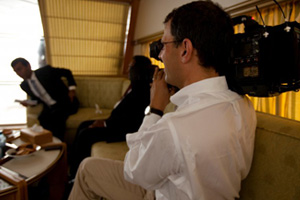 JS: The thing is that unless you’re a total documentary nerd like I am, you don’t necessarily know that there are different kinds of documentaries, and hundreds of different styles. And what we were asking for specifically was a kind of fly-on-the-wall, observational approach, getting back to the early days of cinéma vérité where scenes would unfold, build one upon each other, rather than a lesson or a narrated story or whatever. And it’s hard to explain that to somebody who hasn’t seen a number of those films. I think that made it all the more difficult. I think Nasheed imagined a long 60 Minutes piece. [JS laughs] We’d do a few interviews, follow him around a little bit, and eventually we’d go away.
JS: The thing is that unless you’re a total documentary nerd like I am, you don’t necessarily know that there are different kinds of documentaries, and hundreds of different styles. And what we were asking for specifically was a kind of fly-on-the-wall, observational approach, getting back to the early days of cinéma vérité where scenes would unfold, build one upon each other, rather than a lesson or a narrated story or whatever. And it’s hard to explain that to somebody who hasn’t seen a number of those films. I think that made it all the more difficult. I think Nasheed imagined a long 60 Minutes piece. [JS laughs] We’d do a few interviews, follow him around a little bit, and eventually we’d go away.
H2N: I understand that you were shooting on a small footprint and didn’t always have a translator with you. So there were times at, say, the Copenhagen summit when you’d be filming conversations you couldn’t understand. How you were able to make decision as to what to shoot and what not to shoot?
JS: I don’t know how this happened to me, but I’ve actually ended up doing a lot of that in my career. One half or two-thirds of Lost Boys of Sudan was in another language. I’ve done films in Europe, Africa, Latin America, Afghanistan. I’ve spent a fair amount of time filming a scene in a foreign language that I did not speak myself. Here are a couple things that I’ve learned: one is that there are commonalities in the way people communicate that rise above language. So I’ve kind of learned how to film body cues. And I’ve also learned to use crutches. I’ll occasionally ask, “What’s going on right now? What are they talking about?” Or occasionally I’ll listen for the English word. If you really are following something day after day, hour after hour, you kind of get a clue even if it’s not in your own language of what’s going on. At the end of the day it’s just trying to go back to the film school lessons: be patient, follow the shots, make sure that you get the material you need to cut the scene once you do have the translation.
H2N: You’ve made films on nearly every continent across the globe. When looking at your body of work, the subject matter is incredibly broad in its scope. What is it that generally drives you to pursue these projects?
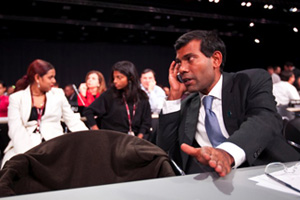 JS: At the end of the day it’s really about story and characters. I’m a big believer that the thing movies do better than any other art form is move people emotionally. It’s just a magic format for that specific thing. When they try to do other things, they can work but they have a more difficult time. If you’re trying to make a scientific argument in a film, it’s more difficult. If you’re trying to tell a history, it’s more difficult. Because you have to remind yourself that what you’re really doing is making a movie. And the central goal has to be to move people, and have them have a kind of out of body experience. And at the same time, you want them identify with the story and the characters in the film. I mean it’s just basic Film 101 stuff. I think if I look back at the stuff that I’ve been involved in at our company [Actual Films], I think that’s the common thing: compelling human stories that hopefully take people to a place they might not have been before, or an idea they haven’t seen before, or a person they haven’t met. It could be a foreign language, it could be somebody in your backyard, but you’re suddenly seeing the world from a completely different perspective.
JS: At the end of the day it’s really about story and characters. I’m a big believer that the thing movies do better than any other art form is move people emotionally. It’s just a magic format for that specific thing. When they try to do other things, they can work but they have a more difficult time. If you’re trying to make a scientific argument in a film, it’s more difficult. If you’re trying to tell a history, it’s more difficult. Because you have to remind yourself that what you’re really doing is making a movie. And the central goal has to be to move people, and have them have a kind of out of body experience. And at the same time, you want them identify with the story and the characters in the film. I mean it’s just basic Film 101 stuff. I think if I look back at the stuff that I’ve been involved in at our company [Actual Films], I think that’s the common thing: compelling human stories that hopefully take people to a place they might not have been before, or an idea they haven’t seen before, or a person they haven’t met. It could be a foreign language, it could be somebody in your backyard, but you’re suddenly seeing the world from a completely different perspective.
H2N: So for you, filmmaking starts with story. Yet all of your films coincide with social or political issues that can be affected by the emotional power you described. I’m sure that few filmmakers know more than you the delicate relationship between entertainment and advocacy. How did you balance those two in The Island President?
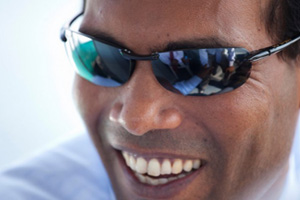 JS: That’s a great question. I think that documentary filmmakers are unique in the film business because we wear two hats. We’re filmmakers working in a long history of cinema, and we use a lot of the same tools and a lot of the same structure in our storytelling. So we have to acknowledge that and be true to that. But on the other hand, when you’re making something that’s nonfiction, it’s true that almost by nature of that people are going to make the connection between your film and the real world. It’s inherent in doing nonfiction. So we wear those two hats. Sometimes the activism hat is a little larger. Sometimes it’s a little smaller. Going into a film like this, I would say that I’m certainly someone who cares about the environment. I’ve been concerned about what’s going on with the planet. And of course when you start reading the science and getting convinced that we’re really messing with the fundamental balance of the way things are in the planet, how could you not get concerned about that? How could any reasonable person not get concerned about that? Especially if you have children or are thinking about having children. So I went into it with a big heart in that area. But I also had a lot of the same feelings I think people have regarding climate change, which is that the debate just seems so… I don’t know, boring. There’s an absurdity to the politics of it. So I thought maybe this is a chance to actually turn it inside out. Instead of looking at climate change as something that’s been done, or an argument that can’t be won, I wanted to look at it as one of the most important, exciting, dramatic things that is going on in our lifetimes. And then I wanted to look at the people who are really dealing with it as human beings, rather than as a political debate. And I when I started reading about Nasheed, I started having these ideas. The activism and the story is all one and the same. It’s very difficult to separate them because it’s a story about people who are trying to right wrongs. It’s hero’s tale in a way, a David and Goliath story. And the story happens to be about trying to save the planet. And that in and of itself is just a very cinematic plot. So the entertainment and the advocacy just very naturally fit together.
JS: That’s a great question. I think that documentary filmmakers are unique in the film business because we wear two hats. We’re filmmakers working in a long history of cinema, and we use a lot of the same tools and a lot of the same structure in our storytelling. So we have to acknowledge that and be true to that. But on the other hand, when you’re making something that’s nonfiction, it’s true that almost by nature of that people are going to make the connection between your film and the real world. It’s inherent in doing nonfiction. So we wear those two hats. Sometimes the activism hat is a little larger. Sometimes it’s a little smaller. Going into a film like this, I would say that I’m certainly someone who cares about the environment. I’ve been concerned about what’s going on with the planet. And of course when you start reading the science and getting convinced that we’re really messing with the fundamental balance of the way things are in the planet, how could you not get concerned about that? How could any reasonable person not get concerned about that? Especially if you have children or are thinking about having children. So I went into it with a big heart in that area. But I also had a lot of the same feelings I think people have regarding climate change, which is that the debate just seems so… I don’t know, boring. There’s an absurdity to the politics of it. So I thought maybe this is a chance to actually turn it inside out. Instead of looking at climate change as something that’s been done, or an argument that can’t be won, I wanted to look at it as one of the most important, exciting, dramatic things that is going on in our lifetimes. And then I wanted to look at the people who are really dealing with it as human beings, rather than as a political debate. And I when I started reading about Nasheed, I started having these ideas. The activism and the story is all one and the same. It’s very difficult to separate them because it’s a story about people who are trying to right wrongs. It’s hero’s tale in a way, a David and Goliath story. And the story happens to be about trying to save the planet. And that in and of itself is just a very cinematic plot. So the entertainment and the advocacy just very naturally fit together.
H2N: Since Nasheed was forced to resign from office, has your relationship to the film changed? Do you hope it will help recover his position in politics as well as help the conversation about climate change?
JS: After Nasheed was ousted from office in the coup in February, and after I kind of satisfied myself that he was safe and that the people I knew in the Maldives were safe, I guess my thoughts about the film were that it made it all the more precious to me. Here’s a document of this guy who was a civil rights worker all his life, he finally got to be president, and this is what he did with that time, that precious time. In the same way that the islands themselves are vulnerable and precious, it’s very easy to transfer that symbol over to the symbol of democracy—how fragile it is, and how it must be appreciated, and nurtured as the kind of fragile thing that it is. So if anything, I think it kind of makes the film more precious. Of course, I hope that people get to know Nasheed through the film and if they’re interested, find out more about what’s happening to him politically. And who knows? Maybe that can help the political situation in the Maldives in the long run. But I think changing the film is kind of a silly thing because the film is the film. It had a certain period of time, it had a through-line, it had a character that led up to the Copenhagen climate conference. And it’s a very dramatic story for what it is.
— Daniel James Scott







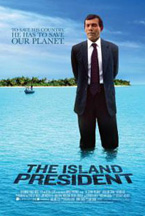

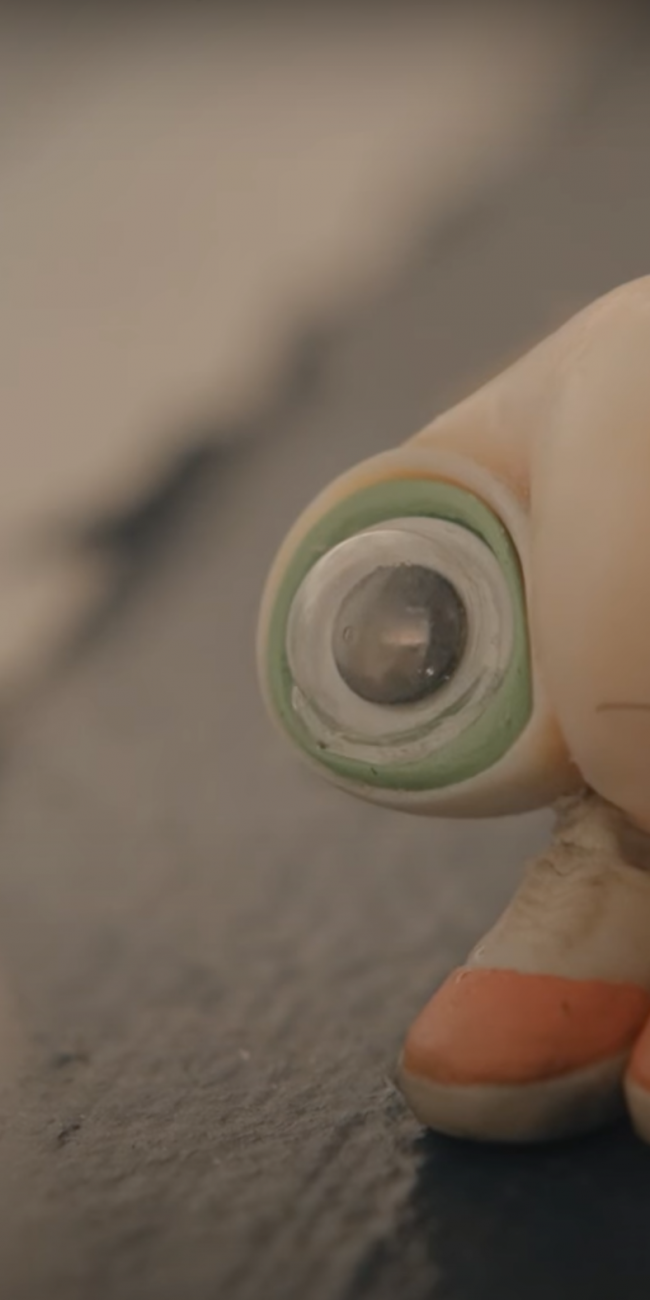
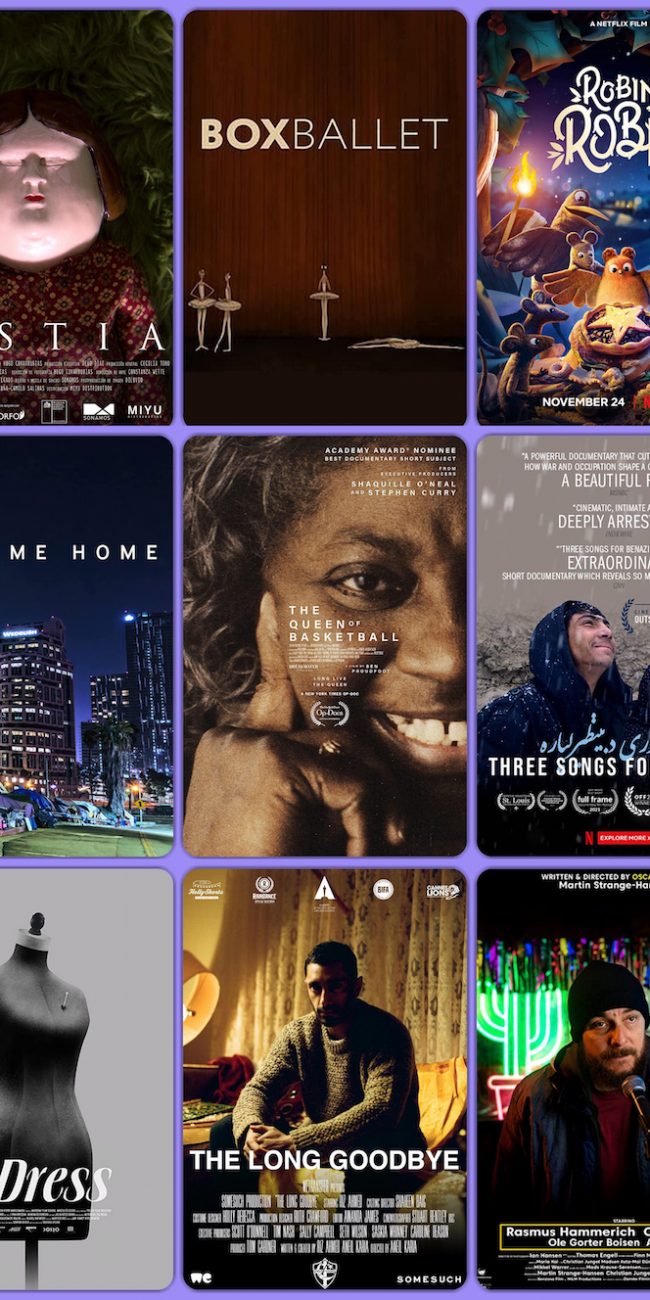


Pingback: HOME VIDEO PICKS – Hammer to Nail